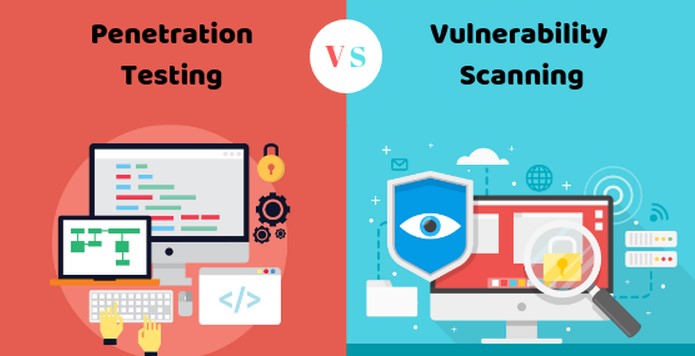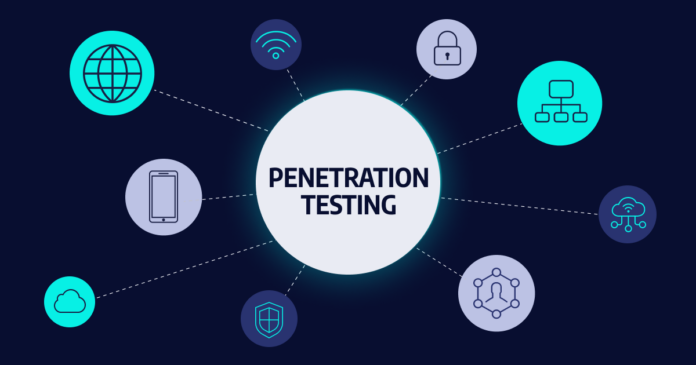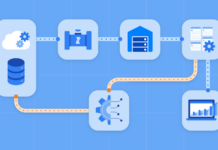As businesses continue to rely more and more on technology, the need for strong cybersecurity measures becomes increasingly important. Cyber attacks can have devastating consequences, from loss of sensitive data to financial loss and reputational damage. That’s why many companies invest in penetration testing, a process that involves simulating an attack on their own computer systems to identify potential vulnerabilities before malicious actors can exploit them.
An authorized simulated attack is carried out on a computer system as part of a penetration test (pen test) to assess its security. To identify and illustrate the economic effects of a system’s vulnerabilities, penetration testers from h-x.technology employ the same tools, strategies, and procedures as attackers.
Most assaults that potentially endanger an organization are often simulated during penetration examinations. They can assess a system’s resilience to attacks from legitimate and illegitimate places and from various system functions. A penetration test can probe any area of a system with the appropriate scope.
The benefits of pen testing

Under perfect conditions, software and systems would have been created without risky security issues. Pen testing provides information on the success of that goal. Pen testing can assist a company in identifying system flaws and evaluating the resilience of safeguards.
Additionally, penetration testing verifies that your company complies fully with data protection and security laws.
Types and phases of pen testing

Pen testers imitate attacks from hostile opponents. They normally follow a plan with a few stages to do this.
Research
To guide the attack approach, a tester has to get as much information as possible on the target from both public and private sources. Internet searches, the recovery of domain registration data, social engineering, and occasionally even trash diving are sources. The target’s attack surface and potential vulnerabilities are mapped out by pen testers using this information.
The type of research varies depending on the goals and parameters of the penetration testing. It could be as straightforward as calling a number call to go through a system’s features.
Scanning

Pen testers employ tools to look for flaws in the target website or system, such as access to the services, application security problems, and open source weaknesses. Pen testers utilize various tools depending on what they discover during research and testing.
We’ll explore some of the most common tools and techniques used in penetration testing.
Port Scanning: Port scanning is one of the most basic techniques used in penetration testing. It involves scanning a target system for open ports that can be exploited by an attacker. Tools like Nmap and Netcat are commonly used for port scanning.
Vulnerability Scanning: Vulnerability scanners are automated tools that scan a system or network for known vulnerabilities. These scanners can identify misconfigured systems, outdated software, and other common issues that could be exploited by an attacker. Some popular vulnerability scanners include Nessus, OpenVAS, and Nikto.
Password Cracking: Password cracking is another technique used in penetration testing to uncover weak passwords that could be easily guessed or cracked by an attacker. Tools like John the Ripper, Hashcat, and Hydra are commonly used for password cracking.
Social Engineering: Social engineering involves manipulating people into divulging sensitive information or performing actions that compromise security. Common social engineering techniques include phishing attacks, pretexting, baiting, and tailgating.
Exploitation Frameworks: Exploitation frameworks like Metasploit provide testers with pre-built exploits for known vulnerabilities in popular software applications and operating systems. These frameworks allow testers to quickly launch attacks against target systems without having to develop custom exploits from scratch.
Wireless Testing: Penetration testers often use wireless testing tools like Aircrack-ng to assess the security of wireless networks. These tools can capture packets transmitted over wireless networks and analyze them for vulnerabilities.
Web Application Testing: Web application testing involves assessing the security of web applications by identifying common vulnerabilities like SQL injection, cross-site scripting (XSS), and file inclusion vulnerabilities.
Gaining and maintaining access
Attacker goals can also include data theft, alteration, or deletion; the transfer of funds; or even just reputational harm to a business. Pen testers choose the appropriate methods for each test scenario to enter the system, either through a vulnerability like SQL injection or spyware, social engineering, or another method.
Pen testers must maintain connectivity with the target long enough for their simulated attack to succeed once they have gained access to it to exfiltrate data, modify it, or exploit functionality. It is essential to show the possible impact.
The various kinds of penetration tests include:
● web apps;
● mobile apps;
● networks;
● cloud;
● IoT devices;
● mobile devices;
● APIs.
For the best risk management, pen testing must be approached holistically. Testing every part of your surroundings is required for this.
What can pen testers see?

Testers are given varied levels of knowledge about or access to the target system according to the objectives of a pen test. Sometimes the penetration testing team starts with one strategy and continues with it. Sometimes, as the testing team becomes more familiar with the system during the pen test, its strategy changes. Pen test access comes in three levels.
When a team operates at the opaque box level, they are unaware of the internal workings of the target network. It acts like a hacker would, searching for any openings that could be used outside.
The team knows one or even more kinds of data in the semi-opaque box. The target’s core data objects and algorithms are also known to it. Pen testers might create test scenarios based on thorough design papers, including the target system’s architecture diagrams.
Lastly, working at the transparent box level gives testers access to systems and their artifacts including source code, and occasionally even the servers hosting the system. The fastest way to get the maximum level of confidence is by using this method.
While the process may be complex and require specialized expertise, the benefits of conducting regular penetration testing are undeniable. Ultimately, investing in this practice can help safeguard sensitive data, protect against financial loss, and maintain trust with customers and stakeholders.









